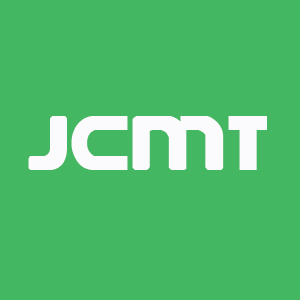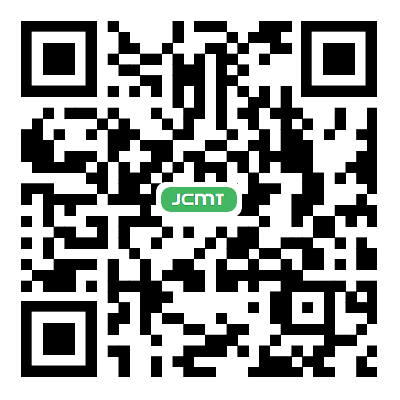REFERENCES
1. Kilfoy BA, Zheng T, Holford TR, Han X, Ward MH, et al. International patterns and trends in thyroid cancer incidence, 1973-2002. Cancer Causes Control 2009;20:525-31.
3. Pellegriti G, Frasca F, Regalbuto C, Squatrito S, Vigneri R. Worldwide increasing incidence of thyroid cancer: update on epidemiology and risk factors. J Cancer Epidemiol 2013;2013:965212.
4. Wiltshire JJ, Drake TM, Uttley L, Balasubramanian SP. Systematic review of trends in the incidence rates of thyroid cancer. Thyroid 2016;26:1541-52.
5. Jung KW, Won YJ, Kong HJ, Oh CM, Lee DH, et al. Cancer statistics in Korea: incidence, mortality, survival, and prevalence in 2011. Cancer Res Treat 2014;46:109-23.
7. Zaichick VYe, Choporov Yu. Determination of the natural level of human intra-thyroid iodine by instrumental neutron activation analysis. J Radioanal Nucl Chem 1996;207:153-61.
9. Zaichick V. Iodine excess and thyroid cancer. J Trace Elem Exp Med 1998;11:508-9.
10. Zaichick V. In vivo and in vitro application of energy-dispersive XRF in clinical investigations: experience and the future. J Trace Elem Exp Med 1998;11:509-10.
11. Zaichick V, Iljina T. Dietary iodine supplementation effect on the rat thyroid 131I blastomogenic action. In: Anke M, Arnhold W, Bergmann H, Bitsch R, Dorn W, editors. Die Bedentung der Mengen-und Spurenelemente. 18. Arbeitstangung. Jena: Friedrich-Schiller-Universität; 1998. pp. 294-306.
12. Zaichick VY, Zaichick SV. Energy-dispersive X-ray fluorescence of iodine in thyroid puncture biopsy specimens. J Trace Microprobe Tech 1999;17:219-32.
13. Zaichick V. Human intrathyroidal iodine in health and non-thyroidal disease. In: Abdulla M, Bost M, Gamont S, Arnaud P, Chazot G, editors. New aspects of trace element research. London and Tokyo: Smith-Gordon and Nishimura; 1999. pp. 114-9.
14. Zaichick V. Relevance of, and potentiality for in vivo intrathyroidal iodine determination. Ann NY Acad Sci 2000;904:630-1.
15. Cho BY, Choi HS, Park YJ, Lim JA, Ahn HY, et al. Changes in the clinicopathological characteristics and outcomes of thyroid cancer in Korea over the past four decades. Thyroid 2013;23:797-804.
16. Shan Z, Chen L, Lian X, Liu C, Shi B, et al. Iodine status and prevalence of thyroid disorders after introduction of mandatory universal salt iodization for 16 years in China: a cross-sectional study in 10 cities. Thyroid 2016;26:1125-30.
17. Zimmermann MB, Galetti V. Iodine intake as a risk factor for thyroid cancer: a comprehensive review of animal and human studies. Thyroid Res 2015;8:8.
18. McNally RJ, Blakey K, James PW, Gomez Pozo B, Basta NO, et al. Increasing incidence of thyroid cancer in Great Britain, 1976-2005: age-period-cohort analysis. Eur J Epidemiol 2012;27:615-22.
19. Ganly I, Nixon IJ, Wang LY, Palmer FL, Migliacci JC, et al. Survival from differentiated thyroid cancer: what has age got to do with it? Thyroid 2015;25:1106-14.
20. Zaichick V. Medical elementology as a new scientific discipline. J Radioanal Nucl Chem 2006;269:303-9.
21. Beyersmann D, Hartwig A. Carcinogenic metal compounds: recent insight into molecular and cellular mechanisms. Arch Toxicol 2008;82:493-512.
22. Martinez-Zamudio R, Ha HC. Environmental epigenetics in metal exposure. Epigenetics 2011;6:820-7.
23. Zaichick V, Zaichick S. Age-related changes of Br, Ca, Cl, I, K, Mg, Mn, and Na contents in intact thyroid of females investigated by neutron activation analysis. Curr Updates Aging 2017;1:2-9.
24. Zaichick V, Zaichick S. Age-related changes of Ag, Co, Cr, Fe, Hg, Rb, Sb, Sc, Se, and Zn contents in intact thyroid of males investigated by neutron activation analysis. Curr Trends Biomedical Eng and Biosci 2017;4:555644.
25. Zaichick V, Zaichick S. Age-related changes of trace element contents in intact thyroid of females investigated by neutron activation analysis. J Gerontol Geriatr Med 2017;3:015.
26. Zaichick V, Zaichick S. Age-related changes of some trace element contents in intact thyroid of males investigated by energy dispersive X-ray fluorescent analysis. MOJ Gerontol Ger 2017;1:133-40.
27. Zaichick V, Zaichick S. Age-related changes of Br, Ca, Cl, I, K, Mg, Mn, and Na contents in intact thyroid of males investigated by neutron activation analysis. J Aging Age Relat Dis 2017;1:1002.
28. Zaichick V, Zaichick S. Age-related changes of some trace element contents in intact thyroid of females investigated by energy dispersive X-ray fluorescent analysis. Scientific J Geriatr Med 2017;1:31-8.
29. Zaichick V, Zaichick S. Trace element contents in adenocarcinoma of human prostate investigated by energy dispersive X-ray fluorescent analysis. J Adenocarcinoma 2016;1:1.
30. Zaichick V, Zaichick S. Trace element contents in adenocarcinoma of the human prostate gland investigated byneutron activation analysis. Cancer Res Oncol 2016;1:002.
31. Zaichick V, Zaichick S. The Comparison between the contents and interrelationships of 17 chemical elements in normal and cancerous prostate gland. JPS Open Access 2016;1:105.
32. Zaichick V, Zaichick S. Prostatic tissue levels of 43 trace elements in patients with prostate adenocarcinoma. Cancer Clin Oncol 2016;5:79-94.
33. Zaichick V, Zaichick S, Wynchank S. Intracellular zinc excess as one of the main factors in the etiology of prostate cancer. J Analytical Oncol 2016;5:124-131.
34. Zaichick V. Differences between 66 chemical element contents in normal and cancerous prostate. J Analytical Oncol 2017;6:37-56.
35. Zaichick V, Zaichick S. Instrumental effect on the contamination of biomedical samples in the course of sampling. J Analytical Chemistry 1996;51:1200-5.
36. Zaichick V, Zaichick S. A search for losses of chemical elements during freeze-drying of biological materials. J Radioanal Nucl Chem 1997;218:249-53.
37. Zaichick S, Zaichick V. The effect of age and gender on 37 chemical element contents in scalp hair of healthy humans. Biol Trace Elem Res 2010;134:41-54.
38. Zaichick V, Nosenko S, Moskvina I. The effect of age on 12 chemical element contents in intact prostate of adult men investigated byinductively coupled plasma atomic emission spectrometry. Biol Trace Elem Res 2012;147:49-58.
39. Zaichick V, Zaichick S. NAA-SLR and ICP-AES Application in the assessment of mass fraction of 19 chemical elements in pediatric and young adult prostate glands. Biol Trace Elem Res 2013;156:357-66.
40. Zaichick V, Zaichick S. Determination of trace elements in adults and geriatric prostate combining neutron activation with inductively coupled plasma atomic emission spectrometry. Open J Biochem 2014;1:16-33.
41. Zaichick S, Zaichick V. INAA application in the age dynamics assessment of Br, Ca, Cl, K, Mg, Mn, and Na content in the normal human prostate. J Radioanal Nucl Chem 2011;288:197-202.
42. Zaichick V, Zaichick S. The effect of age on Br, Ca, Cl, K, Mg, Mn, and Na mass fraction in pediatric and young adult prostate glands investigated by neutron activation analysis. Appl Radiat Isot 2013;82:145-51.
43. Zaichick VYe. Applications of synthetic reference materials in the medical radiological research centre. Fresenius J Anal Chem 1995;352:219-23.
44. Korelo AM, Zaichick V. Software to optimize the multielement INAA of medical and environmental samples. In: Nazarov VM, editor. Activation Analysis in Environment Protection. Dubna, Russia: Joint Institute for Nuclear Research; 1993. pp. 326-32. (in Russian)
45. Kortev AI, Dontsov GI, Lyascheva AP. Bio-elements in human pathology. Sverdlovsk: Middle-Ural publishing-house; 1972. (in Russian)
46. Kamenev VF. Biological role of trace elements in the human and animal organisms of the East Siberia and the Far East. Ulan-Ude; 1963. pp. 12-6. (in Russian)
47. Tipton IH, Cook MJ. Trace elements in human tissue. Part II. Adult subjects from the United States. Health Phys 1963;9:103-45.
48. Reyitblat MA, Kropachyev AM. Some trace elements in the normal thyroid of Perm Prikam’e inhabitants. Proceedings Perm Medical Institute 1967;78:157-64. (in Russian)
49. Forssen A. Inorganic elements in the human body.I. Occurrence of Ba, Br, Ca, Cd, Cs, Cu, K, Mn, Ni, Sn, Sr, Y and Zn in the human body. Ann Med Exp Biol Fenn 1972;50:99-162.
50. Zhu H, Wang N, Zhang Y, Wu Q, Chen R, et al. Element contents in organs and tissues of Chinese adult men. Health Phys 2010;98:61-73.
51. Salimi J, Moosavi K, Vatankhah S, Yaghoobi A. Investigation of heavy trace elements in neoplastic and non-neoplastic human thyroid tissue: a study by proton - induced X-ray emissions. Iran J Radiat Res 2004;1:211-6.
52. Boulyga SF, Zhuk IV, Lomonosova EM, Kievetz MK, Denschlag HO, et al. Determination of microelements in thyroids of the inhabitants of Belarus by neutron activation analysis using the k0-method. J Radioanal Nucl Chem 1997;222:11-4.
53. Reddy SB, Charles MJ, Kumar MR, Reddy BS, Anjaneyulu C, et al. Trace elemental analysis of adenoma and carcinoma thyroid by PIXE method. Nucl Instrum Methods Phys Res B 2002;196:333-9.
55. Ataullakhanov IA. Age changes in the contents of manganese, cobalt, coper, zinc, and iron in the endocrine glands of women. Problemy Endocrinologii 1969;15:98-102. (in Russian)
56. Neimark II, Timoshnikov VM. Development of carcinoma of the thyroid gland in person residing in the focus of goiter endemic. Problemy Endocrinologii 1978;24:28-32. (in Russian)
57. Zabala J, Carrión N, Murillo M, Quintana M, Chirinos J, et al. Determination of normal human intrathyroidal iodine in Caracas population. J Trace Elem Med Bio 2009;23:9-14.
58. Zakutinskiy DI, Parfeynov UyD, Selivanova LN. Handbook on the toxicology of radioisotopes. Moscow: State Publishing House of Medical Literature; 1962. (in Russian)
59. Remis AM. Proceedings of the second all-Union conference of endocrinologists. Nauka; 1962. pp. 330-1. (in Russian)
60. Soman SD, Joseph KT, Raut SJ, Mulay CD, Parameshwaran M, et al. Studies of major and trace element content in human tissues. Health Phys 1970;19:641-56.
61. Teraoka H. Distribution of 24 elements in the internal organs of normal males and the metallic workers in Japan. Arch Environ Health 1981;36:155-65.
62. Boulyga SF, Becker JS, Malenchenko AF, Dietze HJ. Application of ICP-MS for multielement analysis in small sample amounts of pathological thyroid tissue. Microchim Acta 2000;134:215-22.
63. Novikov GV, Vlasova ZA. Biological role of trace elements and their use in agriculture and medicine. Leningrad: Nauka; 1970. pp. 6-7. (in Russian)
64. Bredikhin LM, Soroka VP. Exchange of microelements in goiter patients in the process of surgical treatment. Vrachebnoe Delo 1969;51:81-4. (in Russian)
65. Byrne AR, Kosta L. Vanadium in foods and in human body fluids and tissues. Sci Total Environ 1978;10:17-30.
66. Jundt FC, Purser KH, Kubo H, Schenk EA. Proton-induced X-ray analysis of trace elements in tissue sections. J Histochem Cytochem 1974;22:1-6.
67. Vlasova ZA. Biological role of trace elements and their use in agriculture and medicine. Leningrad: Nauka; 1970. pp. 164-5. (in Russian)
68. Maeda K, Yokode Y, Sasa Y, Kusuyama H, Uda M. Multielemental analysis of human thyroid glands using particle induced X-ray emission (PIXE). Nucl Instrum Methods Phys Res B 1987;22:188-90.
69. Al-Sayer H, Mathew TC, Asfar S, Khourshed M, Al-Bader A, et al. Serum changes in trace elements during thyroid cancers. Mol Cell Biochem 2004;260:1-5.
70. Nishida M, Sakurai H, Tezuka U, Kawada J, Koyama M, et al. Alterations in manganese and iodide contents in human thyroid tumors; a correlation between the contents of essential trace elements and the states of malignancy. Clinica Chimica Acta 1990;187:181-7.
71. Tadros TG, Maisey MN, Ng Tang Fui SC, Turner PC. The iodine concentration in binign and malignant thyroid nodules measured by X-Ray fluorescence. Brit J Radiol 1981;54:626-9.
72. Zagrodzki P, Nicol F, Arthur JR, Słowiaczek M, Walas S, et al. Selenoenzymes, laboratory parameters, and trace elements in different types of thyroid tumor. Biol Trace Elem Res 2010;134:25-40.
73. Kaya G, Avci H, Akdeniz I, Yaman M. Determination of trace and minor metals in benign and malign human thyroid tissues. Asian J Chem 2009;21:5718-26.
74. Yaman M, Akdeniz I. Sensitivity enhancement in flame atomic absorption spectrometry for determination of copper in human thyroid tissues. Anal Sci 2004;20:1363-6.
75. Katoh Y, Sato T, Yamamoto Y. Determination of multielement concentrations in normal human organs from the Japanese. Biol Trace Elem Res 2002;90:57-70.
76. Schroeder HA, Tipton IH, Nason AP. Trace metals in man: strontium and barium. J Chron Dis 1972;25:491-517.
77. Zaichick V. Sampling, sample storage and preparation of biomaterials for INAA in clinical medicine, occupational and environmental health. In: IAEA, editor. Harmonization of health-related environmental measurements using nuclear and isotopic techniques. Vienna: IAEA; 1997. pp. 123-33.
78. Zaichick V. Losses of chemical elements in biological samples under the dry aching process. Trace Elements Med 2004;5:17-22. (in Russian)
79. Krewski D, Yokel RA, Nieboer E, Borchelt D, Cohen J, et al. Human health risk assessment for aluminium, aluminium oxide, and aluminium hydroxide. J Toxicol Environ Health B Crit Rev 2007;10 Suppl 1:1-269.
80. Naghii MR, Mofid M, Asgari AR, Hedayati M, Daneshpour MS. Comparative effects of daily and weekly boron supplementation on plasma steroid hormones and proinflammatory cytokines. J Trace Elem Med Biol 2011;25:54-8.
82. Pavelka S. Radiometric determination of thyrotoxic effects of some xenobiotics. Rad Applic 2016;1:155-8.
83. Maschkovsky MD. The Medicaments. 15th ed. Moscow: Novaya Volna; 2005. pp. 72-86.
84. Legrand G, Humez S, Slomianny C, Dewailly E, Vanden Abeele F, et al. Ca2+ pools and cell growth. Evidence for sarcoendoplasmic Ca2+-ATPases 2B involvement in human prostate cancer cell growth control. J Biol Chem 2001;276:47608-14.
85. Munaron L. Calcium signalling and control of cell proliferation by tyrosine kinase receptors (review). Int J Mol Med 2002;10:671-6.
86. Capiod T, Shuba Y, Skryma R, Prevarskaya N. Calcium signalling and cancer cell growth. Subcell Biochem 2007;45:405-27.
87. Roderick HL, Cook SJ. Ca2+ signalling checkpoints in cancer: remodelling Ca2+ for cancer cell proliferation and survival. Nat Rev Cancer 2008;8:361-75.
88. Flourakis M, Prevarskaya N. Insights into Ca2+ homeostasis of advanced prostate cancer cells. Biochim Biophys Acta 2009;1793:1105-9.
89. Yang H, Zhang Q, He J, Lu W. Regulation of calcium signaling in lung cancer. J Thorac Dis 2010;2:52-6.
90. McAndrew D, Grice DM, Peters AA, Davis FM, Stewart T, et al. ORAI1-mediated calcium influx in lactation and in breast cancer. Mol Cancer Ther 2011;10:448-60.
91. Zaichick V, Zaichick S. INAA application in the assessment of chemical element mass fractions in adult and geriatric prostate glands. Appl Radiat Isot 2014;90:62-73.
92. Zaichick V, Zaichick S, Davydov G. Differences between chemical element contents in hyperplastic and nonhyperplastic prostate glands investigated by neutron activation analysis. Biol Trace Elem Res 2015;164:25-35.
93. Zaichick V, Zaichick S. Age-related changes in concentration and histological distribution of Br, Ca, Cl, K, Mg, Mn, and Na in nonhyperplastic prostate of adults. EJBMSR 2016;4:31-48.
94. Zaichick V, Zaichick S, Rossmann M. Intracellular calcium excess as one of the main factors in the etiology of prostate cancer. AIMS Mol Sci 2016;3:635-47.
95. Zaichick V. X-ray fluorescence analysis of bromine for the estimation of extracellular water. Appl Radiat Isot 1998;49:1165-9.
96. Li Y, Trush MA. DNA damage resulting from the oxidation of hydroquinone by copper: role for a Cu(II)/Cu(I) redox cycle and reactive oxygen generation. Carcinogenesis 1993;14:1303-11.
97. Becker TW, Krieger G, Witte I. DNA single and double strand breaks induced by aliphatic and aromatic aldehydes in combination with copper (II). Free Radic Res 1996;24:325-32.
98. Glass GA, Stark AA. Promotion of glutathione-gamma-glutamyl transpeptidase-dependent lipid peroxidation by copper and ceruloplasmin: the requirement for iron and the effects of antioxidants and antioxidant enzymes. Environ Mol Mutagen 1997;29:73-80.
99. Chandra AK, Goswami H, Sengupta P. Effects of magnesium on cytomorphology and enzyme activities in thyroid of rats. Indian J Exp Biol 2014;52:787-92.
100. Jiménez A, Planells E, Aranda P, Sánchez-Viñas M, Llopis J. Changes in bioavailability and tissue distribution of selenium caused by magnesium deficiency in rats. J Am Coll Nutr 1997;16:175-80.
101. Durlach J, Bara M, Guiet-Bara A, Collery P. Relationship between magnesium, cancer and carcinogenic or anticancer metals. Anticancer Res 1986;6:1353-61.
102. Mulay IL, Roy R, Knox BE, Suhr NH, Delaney WE. Trace-metal analysis of cancerous and non-cancerous human tissues. J Natl Cancer Inst 1971;47:1-13.
103. Anghileri LJ, Miller ES, Robinette J, Prasad KN, Lagerborg VA. Calcium metabolism in tumors. II. Calcium, magnesium and phosphorus in human and animal tumors. Oncology 1971;25:193-209.
104. Digiesi V, Bandinelli R, Bisceglie P, Santoro E. Magnesium in tumoral tissues, in the muscle and serum of subjects suffering from neoplasia. Biochem Med 1983;29:360-3.
105. Szmeja Z, Kończewska H. Red blood cell, serum and tissue magnesium levels in subjects with laryngeal carcinoma. ORL J Otorhinolaryngol Relat Spec 1983;45:102-7.
106. Ranade SS, Panday VK. Major metals in human cancer: calcium, magnesium, sodium and potassium. Sci Total Environm 1985;41:79-89.
107. Taylor JS, Vigneron DB, Murphy-Boesch J, Nelson SJ, Kessler HB, et al. Free magnesium levels in normal human brain and brain tumors: 31P chemical-shift imaging measurements at 1.5 T. Proc Natl Acad Sci USA 1991;88:6810-4.
108. Seltzer MH, Rosato FE, Fletcher MJ. Serum and tissue magnesium levels in human breast carcinoma. J Surg Res 1970;10:159-62.
109. Wolf FI, Cittadini AR, Maier JA. Magnesium and tumors: Ally or foe? Cancer Treat Rev 2009;35:378-82.
110. Soldin OP, Aschner M. Effects of manganese on thyroid hormone homeostasis: potential links. Neurotoxicology 2007;28:951-6.
111. Aschner JL, Aschner M. Nutritional aspects of manganese homeostasis. Mol Aspects Med 2005;26:353-62.
112. Hasegawa S, Koshikawa M, Takahashi I, Hachiya M, Furukawa T, et al. Alterations in manganese, copper, and zinc contents, and intracellular status of the metal-containing superoxide dismutase in human mesothelioma cells. J Trace Elem Med Biol 2008;22:248-55.
113. Trump BF, Berezesky IK, Phelps PC. Sodium and calcium regulation and the role of the cytoskeleton in the pathogenesis of disease: a review and hypothesis. Scan Electron Microsc 1981;(Pt 2):434-54.
114. Ranade SS, Panday VK. Major metals in human cancer: calcium, magnesium, sodium and potassium. Sci Total Environ 1985;41:79-89.
115. Romeu A, Arola L, Alemany M. Essential metals in tissues and tumor of inbred C57BL/6 mice during the infective cycle of Lewis lung carcinoma. Cancer Biochem Biophys 1986;9:53-66.
116. Ouwerkerk R, Jacobs MA, Macura KJ, Wolff AC, Stearns V, et al. Elevated tissue sodium concentration in malignant breast lesions detected with non-invasive 23Na MRI. Breast Cancer Res Treat 2007;106:151-60.
117. Kowalska J, Gajda M, Kwiatek WM, Franczyk-Zarów M, Kostogrys RB, et al. Chemical composition of atherosclerotic plaques of apoE/LDLR-double knockout mice by synchrotron radiation FTIR microspectroscopy. Acta Physica Polonica 2012;121:555-60.
118. Townsend DM, Tew KD, Tapiero H. Sulfur containing amino acids and human disease. Biomed Pharmacother 2004;58:47-55.








